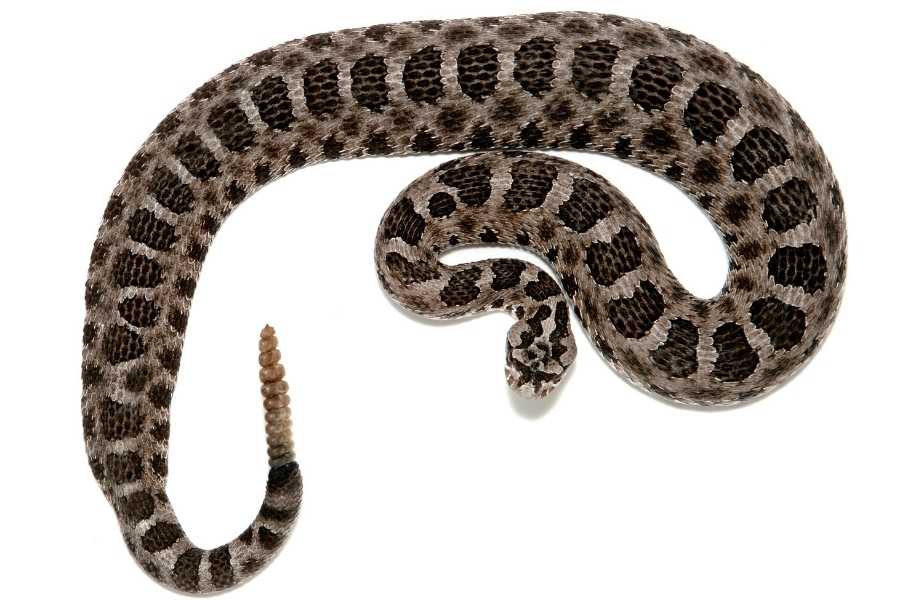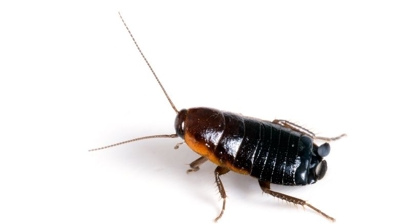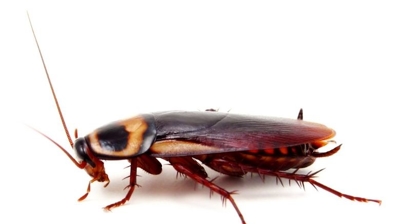
Rattlesnake Control Services

Rattlesnakes
Rattlesnakes can be considered harmful in several ways, primarily due to their venomous bites and the risks they pose to humans, pets, and livestock. Here are some of the ways in which these snakes can be harmful:
- Encounters in Residential Areas – As human populations expand into natural habitats, rattlesnakes are increasingly found in yards, garages, and even homes, leading to dangerous encounters. This is particularly concerning in suburban and rural areas near deserts, grasslands, and wooded regions.
- Potential for Defensive Aggression – While rattlesnakes generally prefer to avoid humans, they can become aggressive when threatened or cornered. If startled, they may strike as a defensive measure, putting people and animals at risk.
- Venomous Bites – Rattlesnakes possess potent venom that can cause severe tissue damage, extreme pain, swelling, internal bleeding, and, in rare cases, death if left untreated. While fatalities are uncommon due to modern medical treatment, a bite can still lead to long-term health complications, including nerve damage and limb loss.
- Risk to Pets and Livestock – Rattlesnakes pose a significant threat to pets such as dogs and cats, as well as livestock like horses and cattle. A bite can be fatal to smaller animals or cause severe swelling, pain, and even lameness in larger animals.
- Medical Costs and Treatment Burden – Treating a rattlesnake bite often requires expensive antivenom, hospitalization, and sometimes surgical procedures. The financial burden can be significant, especially for individuals without adequate health insurance.
- Psychological Fear and Stress – Rattlesnakes evoke fear in many people, which can lead to stress, anxiety, and even avoidance of outdoor activities. This fear, whether rational or not, can impact hiking, camping, or other recreational activities in rattlesnake-prone areas.
While rattlesnakes are considered harmful in these ways, they also play an important ecological role in controlling rodent populations.
Learn more: Do Rattlesnakes Bite? || Are Rattlesnakes Poisonous? || What Do Rattlesnakes Look Like? || What Do Rattlesnakes Eat?
Rattlesnake Removal
Getting rid of rattlesnakes is important for several health, safety, and property reasons, especially in areas where human activity overlaps with their natural habitats:
- Human Safety: Rattlesnakes are venomous. While they generally avoid humans, they will bite if threatened, cornered, or accidentally stepped on. Rattlesnake bites can cause severe pain, tissue damage, internal bleeding, nerve damage, or, in rare cases, death if not treated promptly. Eliminating rattlesnakes from areas like homes, yards, or recreational zones reduces the risk of such encounters, particularly for children, pets, and the elderly who may be more vulnerable.
- Pet Safety: Dogs and cats are naturally curious and may try to play with or attack a rattlesnake. Pets are highly susceptible to venom, and bites can be fatal if emergency care is not administered immediately. Reducing rattlesnake presence helps protect animals from potentially deadly encounters.
- Preventing Property Damage and Invasion: Rattlesnakes often seek shelter in areas like woodpiles, sheds, crawl spaces, and thick vegetation. Their presence can deter people from using certain outdoor spaces and may complicate routine maintenance or landscaping. Additionally, a rattlesnake infestation could indicate other pest populations (like rodents), which attract snakes seeking food.
- Rodent Control Connection: Rattlesnakes feed on rodents, which can seem beneficial, but having snakes around indicates a larger rodent problem. Relying on snakes to control rodents can be risky, as the danger posed by venom outweighs the benefit of natural rodent control in human-inhabited areas.
- Legal and Liability Concerns: In some regions, homeowners and property managers may face liability if someone is bitten on their property. Removing rattlesnakes reduces potential legal risk, especially in public-access areas or rental properties.
- Peace of Mind and Quality of Life: Simply knowing that venomous snakes are present can cause stress and limit outdoor activity. Controlling or removing rattlesnakes restores safe use of yards, gardens, and recreational areas.
- Safe Removal Practices: It’s critical to handle rattlesnake removal professionally. Attempting to capture or kill them without proper training can increase the risk of bites. Professionals use tools, protective equipment, and safe relocation methods or elimination strategies that comply with local wildlife regulations.
Effectively managing rattlesnakes is not just about eliminating a threat—it’s about creating a safer, more controlled environment for people, pets, and property while addressing underlying ecological or pest issues that attract snakes in the first place.
Learn more: How To Get Rid Of Rattlesnakes
Rattlesnake Control
Hiring our professional snake control for rattlesnakes is essential for safety, effectiveness, and long-term prevention. Rattlesnakes are venomous, aggressive when threatened, and pose serious risks to people, pets, and livestock. Attempting to remove or kill a rattlesnake without proper training or equipment can easily lead to severe bites or even fatal outcomes.
Our professional snake control technicians have the expertise, licensing, and protective gear necessary to identify, capture, and relocate rattlesnakes safely and humanely. We understand rattlesnake behavior, know where to look for dens and hiding spots, and use specialized tools like snake tongs, traps, and snake-proof barriers to ensure complete removal.
Beyond removal, our experts also conduct thorough inspections of your property to identify potential attractants such as rodent infestations, cluttered debris, tall grass, or structural gaps that snakes use for shelter. We then implement proven exclusion methods to seal entry points and modify the environment to make it less appealing to snakes.
Hiring our professional rattlesnake control provides peace of mind, reduces liability, and ensures compliance with local wildlife regulations. It’s a proactive and safe investment that protects your home or business from future encounters with dangerous snakes.
Rattlesnake Exterminators
Hiring our local exterminators to handle rattlesnakes has distinct advantages over relying on a national company. The difference can significantly impact effectiveness, safety, and long-term results:
Local Expertise and Knowledge
Our local exterminators are intimately familiar with the specific species of rattlesnakes in the region, their behavior patterns, seasonal movements, and preferred habitats. For instance, rattlesnakes in desert regions behave differently from those in woodland or suburban areas. This knowledge allows our local professionals to anticipate where snakes are likely to hide, feed, or breed and target treatments accordingly.
National companies typically follow standardized protocols that don’t account for regional variations, reducing efficiency and sometimes increasing risk.
Faster Response Time
Because we operate nearby, our local exterminators can often respond much more quickly to calls. Time is critical with rattlesnake encounters, particularly if there’s a recent sighting near children, pets, or high-traffic areas. A delayed response from a national company, which might schedule visits days or weeks after your phone call or even rely on regional subcontractors, can leave your property at risk.
Tailored, Site-Specific Solutions
Our local experts provide customized solutions based on your property’s layout, vegetation, and potential rodent populations that attract snakes. We implement targeted exclusion techniques, habitat modification, and preventive strategies rather than generic, one-size-fits-all treatments.
National companies often offer cookie-cutter plans, which do not address the unique challenges of your yard, crawl spaces, or surrounding landscape.
Knowledge of Local Regulations
Rattlesnakes are sometimes protected under state or local wildlife laws, and relocation or removal may be restricted. Our local exterminators are familiar with the legal requirements in the area, ensuring that any removal is compliant. National chains may not be fully up to date on these local regulations, which could lead to fines, legal issues, or unintended harm to wildlife.
Stronger Accountability and Follow-Up
Our local exterminators depend on our reputation within the community. We provide personal follow-up, revisit your property if issues persist, and provide ongoing advice to help prevent future infestations.
National companies, especially large franchises, have higher staff turnover and less direct accountability. After the initial visit, it is not uncommon to encounter slow customer service or difficulty getting the same technician back for follow-up.
Community-Oriented Knowledge
Our local exterminators know which neighborhoods, landscapes, and conditions are prone to rattlesnake activity in the area. This community-level insight allows us to proactively advise on preventive measures like fencing, rodent control, or habitat adjustments—things national chains often overlook.
Our local exterminators combines speed, regional expertise, personalized service, and regulatory knowledge. For a venomous, potentially dangerous species like rattlesnakes, these factors can make the difference between repeated encounters and long-term safety for your property, family, and pets.
Where Are Rattlesnakes Found?
Rattlesnakes are native to the Americas, and their distribution varies depending on the species. They are often found in a range of habitats, from deserts to forests, and even grasslands. Below are some regions and types of environments where you might encounter rattlesnakes:
- North America: Rattlesnakes are found throughout North America, from southern Canada to northern Mexico. In the United States, they are most commonly encountered in the southwestern states like Arizona, New Mexico, and Texas. They also inhabit parts of California, Nevada, Utah, Colorado, and the southeastern United States.
- South America: Rattlesnakes are also present in parts of South America, particularly in countries like Argentina and Venezuela.
- Deserts: Many rattlesnake species are well adapted to desert environments and can be found in arid regions such as the Sonoran Desert in the southwestern United States and northern Mexico.
- Grasslands: Some species of rattlesnakes inhabit grasslands and prairies. These snakes are often associated with rodent-rich grassy habitats.
- Rocky Areas: Rattlesnakes are known to seek shelter in rocky outcrops, crevices, and hillsides. These areas provide hiding spots and help regulate their body temperature.
- Forests: In some regions, you can find rattlesnakes in wooded areas, especially where there is a combination of suitable prey and appropriate hiding places.
- Human Habitats: Unfortunately, rattlesnakes can also be found in areas where human development encroaches on their natural habitat. They may occasionally appear in suburban neighborhoods, golf courses, or near rural homes.
When encountering rattlesnakes in their natural habitat, it's essential to exercise caution and respect their space. Rattlesnakes are generally not aggressive and will often provide a warning rattle before striking if they feel threatened. To avoid snakebites, keep a safe distance, and do not attempt to handle or provoke them. If you live in an area where rattlesnakes are common, it's a good idea to educate yourself on how to coexist safely with these reptiles and take appropriate precautions when outdoors.
Rattlesnake Life Cycle
The life cycle of rattlesnakes is a fascinating process that includes various stages, from birth to adulthood. Here's an overview of the life cycle of rattlesnakes:
- Birth and Early Life: Rattlesnakes are ovoviviparous, which means they give birth to live young rather than laying eggs. Mating typically occurs in the spring, with males competing for the attention of females. After fertilization, the female carries the developing embryos inside her body for a gestation period that can last several months. The duration varies among species and environmental conditions. In late summer or early autumn, the female gives birth to a litter of neonates, which are baby rattlesnakes. The number of neonates in a litter varies but can range from a few to over a dozen, depending on the species and the health of the mother.
- Neonate Stage: Neonate rattlesnakes are born with a pre-button or button on their tail, which will eventually develop into their first rattle segment as they shed their skin. They are independent from birth and must fend for themselves. They immediately begin hunting for small prey, primarily insects and small rodents. Neonates are particularly vulnerable to predation during this stage, and many do not survive their first year.
- Growth and Development: Rattlesnakes grow relatively slowly compared to some other reptiles. Their growth rate depends on factors like food availability, environmental conditions, and species. As they grow, they shed their skin periodically, which allows them to increase in size and replace the segments of their rattle.
- Maturity: Rattlesnakes typically reach sexual maturity between 2 and 5 years of age, although this varies among species and individuals. Once sexually mature, they become active in mating and reproducing, continuing the cycle.
- Adult Stage: Adult rattlesnakes are the reproductive and ecological mainstay of their populations. They continue to hunt for prey, regulate their body temperature, and engage in mating activities. The lifespan of a rattlesnake can vary significantly depending on factors such as species, environmental conditions, and human interference. In the wild, they generally live from 10 to 20 years, with some individuals reaching even older ages.
- Reproduction and Parenting: Rattlesnakes exhibit various mating behaviors, including elaborate courtship rituals, which can involve multiple males competing for a female's attention. After successful mating, the female carries the embryos for the gestation period mentioned earlier, eventually giving birth to live young. Rattlesnakes do not provide parental care beyond giving birth to their offspring. The neonates are on their own from birth, and the cycle continues.
Throughout their life cycle, rattlesnakes play an essential role in ecosystems as both predators and prey. They help control rodent populations and are a subject of study and conservation efforts to ensure their continued survival in their natural habitats.

Hear From Our Happy Customers
-
"Great Communication"
Tech was on time, communication was great, and he accommodated my needs.
- Alonzo W. -
"Wonderful Service"
Wonderful service. Jarvis is great. Took care of everything I needed. Thank you!
- Henry P. -
"Exceeds Expectations"
I can’t say enough positive things about this company... The tech that came out, Jarvis went above and beyond my expectations. Thank you guys, I will continue using your services.
- Jake M. -
"Professional & Considerate"
I’m pleased with Miche services. Jarvis came today. Professional and considerate. Thank you!
- Judy B. -
"Very Knowledgeable"
The tech that arrived was courteous, professional, and very knowledgeable. He was Great.
- Uerial I. -
"Fantastic & Patient"
Jarvis was fantastic and patient. He answered my questions with an in-depth explanation and addressed all of my areas of concern. Would love for him to be my assigned tech going forward. Well done!
- Yonnette M.



